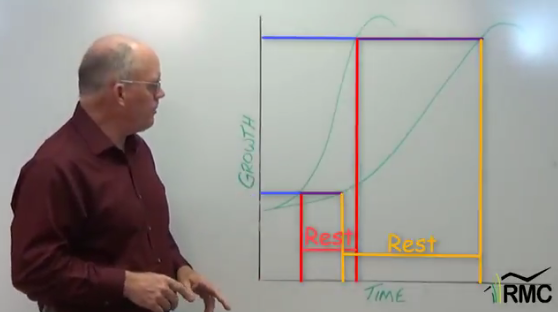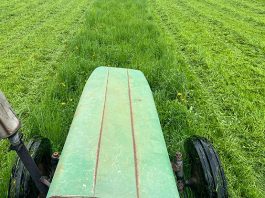Everyone says that one of the benefits of management intensive grazing is that the cows put the fertilizer right on the ground where it belongs. But how well are they doing their jobs? Are they spreading the love? Or are they concentrating in particular places? Most importantly, who’s going to do the ground surveys to find out what’s happening? Well, don’t worry, you don’t have to go out and count cow pies because there are researchers out there who have already done it for you.
A 2001 study published in the Journal of Environmental Quality called “Spatial and time distribution of dairy cattle manure in an intensive pasture system” gathered information on where in the pasture the cows pooped and peed for two reasons. First, folks are concerned about the impact of these nutrients on water quality, particularly in pastures with streams running through them. Second, they wanted to get a handle on how much of this deposition was done in the dairy farm’s feeding and milking areas so that operators could get a better sense of how much would have to be moved back out to the pastures or collected and stored in some other way.

Counting feces and urine “events” for all 36 animals in the herd would be difficult, so the scientists designed their research so that they could get a statistically valid sample from only 8 cows. Then they watched these 8 cows day and night while they were on pasture, in the feed area, in the milking parlor or walking between these areas. During this time “events” were marked with color coded flags and then later mapped. Scientists were so thorough in their work that they used a Topcon Total Station Laser Transit System to map the location of the event and its size. Here’s the map that resulted from their work:
Their results showed that the more time cows spend in one area, the more likely they are to leave their mark behind. During hotter months, they spent significantly more time near the water source. The purplish bars in the graph below show a large increase in events within 30 meters (about 100 feet) of the water source during times when the cows were mildly heat stressed.
What can we do with this?
As the scientists concluded, during hot weather you’ll get more even nutrient distribution if you move your water source more often. This leaves a challenge for folks with pastures that include streams and permanent water sources. Some folks have solved this problem by placing supplement blocks far away from the water. Cows get their drinks and then head back to where they can graze and get goodies.
 Our researchers also found that, on average, 84.7% of manure events and 84.1% of urination events occurred in pasture, 9.1% of poops and 12.3% of pees happened in the feeding areas, and only 3.1% of number 1s and 2.1% of number 2s occurred in the miking parlor and parlor areas. This helps dairy operators to plan for reduced manure storage and labor to clean it up, so that they can reduce costs of production.
Our researchers also found that, on average, 84.7% of manure events and 84.1% of urination events occurred in pasture, 9.1% of poops and 12.3% of pees happened in the feeding areas, and only 3.1% of number 1s and 2.1% of number 2s occurred in the miking parlor and parlor areas. This helps dairy operators to plan for reduced manure storage and labor to clean it up, so that they can reduce costs of production.







You can train them to go in pasture. Make them all stand up then wait 3-5 minutes then drive in.
Yes, during our grazing trials we encouraged the staff to do that, to give them time, but they weren’t always willing to wait for them to do so!
Seeing this is just delightful! I’m so glad this research is still being talked about.
Those were good times sitting out there in the dark listening for that sound…
We even had pizza delivered out to the pasture one night!
I miss working with dairy cattle!
Happy Grazing!!
Sharon White Bennett
Comments are closed.